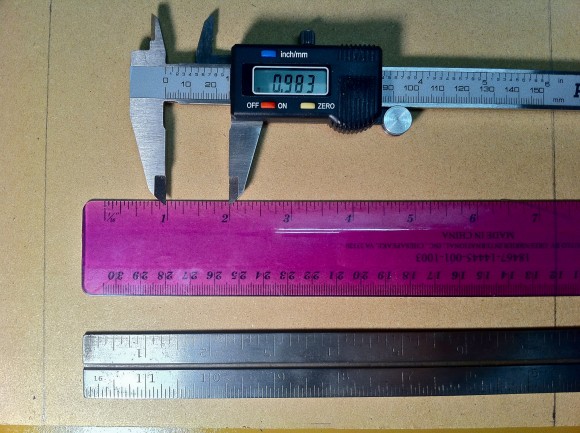How Wavegarden Works – My article in Wired Magazine
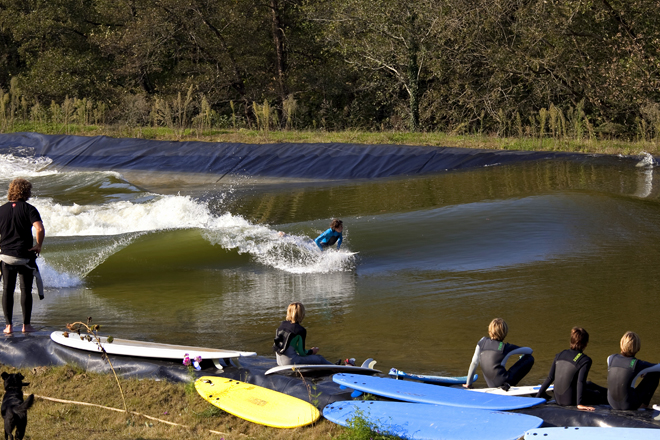
In February 2011, a group of Spanish engineers debuted a project they had been working on for over six years called Wavegarden — a wave pool concept that uses an active system for creating waves that have the shape and power that surfers normally travel thousands of miles to ride. The initial prototype showed videos of guys ripping on knee-to-waist-high, barreling waves and caused quite a murmur in the surf community: “How does it work? Where is it located? When will one be built near me?” Those questions unanswered, the Wavegarden team shortly afterward announced that they were busy at work on an oversized new prototype that would deliver shoulder-high waves–the height where surfing gets truly competitive.
I reached out to the Wavegarden folks that put this system together, and wrote a piece for Wired magazine about what it is and how it works. Check it out in the August 2011 issue (on newsstands right now), or read the online version (complete with video). And keep your eyes open for their new pool, which is forecasted to be finished around September.
Forgotten Detroit – Kickstart this indie film
Making an independent film embodies the tenets of DIY to the max. With that in mind, I got excited when I heard about my friend Sarah Pierpont’s new project — she’s producing a film called Forgotten Detroit, (“About learning when to let go–something Detroit has never conceded to do, thankfully”). Sarah works with a small group called Hott Garbage, a crew of creative individuals that collaborates on video and film projects — check out their last piece, I Hate Chicago, In the Gutter with Nick Vandermolen, a short documentary with some really funny interactions between the sarcastic Nick and local kids that might not fully get him.
For their new film, Sarah and Hott Garbage have put together a Kickstarter to help get things made — you can help produce the film with your contribution/pre-order, including the opportunity to get executive producer credits on the film itself.
Being a film buff and a gadget geek, I asked for more details about how they film will be shot. Sarah’s notes:
– We’re shooting it digitally, either with a Red/EPIC or a souped up 5D (to be determined). I’m such a sucker for sweet camera technology…the RED is a beautiful machine. Since we’re keeping the budget cheap, we’re taking advantages of these more realistically-priced options, and compensating with amazing glass – if we shoot 5D we’ll be using Zeiss Compact Primes like this one.
– We’re shooting in the Russell Industrial Center – an amazing rehabbed/gutted old airplane parts factory. It’s huge, gorgeous and has tons of studio space for artists, builders, musicians – you name it. It’s like an artistic commune for $3 a square foot. It also has massive empty spaces that make for great music video locations (see this video we previously did – check out “safe for the time being“)
– This is my favorite part: not only is “Forgotten Detroit” a film, it’s an eBook! Hott Garbage Film’s sister company is Nan Bu Nan Books – a publisher, run by the same folks as HG, that focuses primarily on eBooks. Self-build from the ground up. We do TONS of crossover stuff with Hott Garbage and Nan Bu Nan — for example, a short film called “I Hate Chicago” that you can check out at www.hottgarbage.com.
– I’ll be cutting the film myself – in Final Cut (7, NOT FCPX. haha). One of the COOLEST thing about “Forgotten Detroit” is that it’s totally a family affair – the music, shooting, editing, color correction are all being done in house by a group of folks who love and trust one another and have each other’s backs artistically. It’s pretty amazing!

You need to be between 5’2″ and 6’3″ to get a job as an astronaut, and other interesting NASA hiring requirements and notes

I was just checking out the NASA brochure for astronaut jobs and hiring information (last updated March 2008). Although the information has to be made available, I didn’t realize they marketed it so publicly — I like to imagine most astronauts as Steve Rogers-style, genetically modified super-scientist outer space aviators. The type that are made, not born, with the sole intention of implementing extra-terrestrial projects of the highest level of classification.
All joking aside, there are some very interesting points in the job post.
- Prospective astronauts must be between 62″ and 75″ which is the height requirement of the Soyuz spacecraft that will be ferrying astronauts to and from the ISS for the foreseeable future
- “The National Aeronautics and Space Administration accepts applications for the position of Astronaut Candidate on an as needed basis” (added emphasis is mine). I love this line — “Hey Tommy, we need more astronauts, dammit!”
- Posts to the ISS can last from 3 to 6 months long. Like a semester at sea, or the ultimate study abroad experience.
- A science degree in specific areas (engineering, biological science, physical science, or mathematics) and just three years of relevant experience are needed to qualify. And a Ph.D counts as three years.
- Teaching experience is favorable!
- A number of technical degrees do NOT qualify – including archaeology (although I can immediately think of a movie plot where NASA has to retract this requirement upon discovery of alien artifacts that appear …familiar).
- Salary: for civilian astronauts, the pay follows the General Scale, grades 11-14, which based on the 2010 chart, means they are generally paid somewhere between $50,287 and $110,104 per year.
- “When completed, the ISS will be 356 feet across and 290 feet long, and it will weigh about 940,000 pounds” — for comparison’s sake, a Nimitz class aircraft carrier is 1092 feet long by 252 feet wide, and weighs 97,000 TONS. That’s less than a half of one percent of the weight. Which is smart, since it’s expensive to carry heavy cargo into orbit.

Cut-and-Fold Paper VW Touareg and Other Papercraft Rally Cars
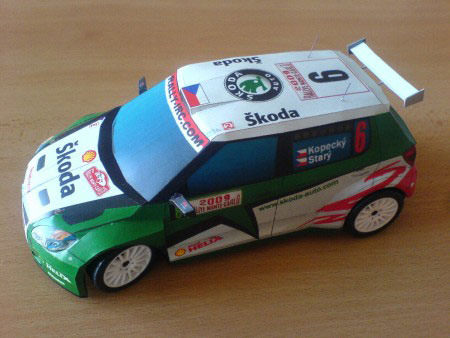
Rally racing, awesome as it is, tends to be a European phenomenon. Hilly, public tracks, often off-road. Rallies have been around since the advent of the automobile (mimicking horse-and-buggy races), and nowadays are high-speed, handbrake-turning, hump-jumping affairs. Outside of the European races, a few prominent rallies exist, with the Baja 1000 and the Paris-Dakar being two of the largest.
With that history behind us, here’s a fun way to show of how cultured and European you are: papercraft rally cars you can print and make to adorn your work desk. I’m fond of Volkswagen Touaregs, but the Mitsubishi Lacer with those all-terrain tires looks pretty aggressive too.
I found these and many more on the Czech site car-models.webnode.cz, via one of my fave sites, Paperkraft.net. You’ll need .rar software to unzip the files. If you make any of them, send me pics and I’ll post with your info for all the world to see. Read More
How to Make a Balsa Wood Canon DSLR Mockup

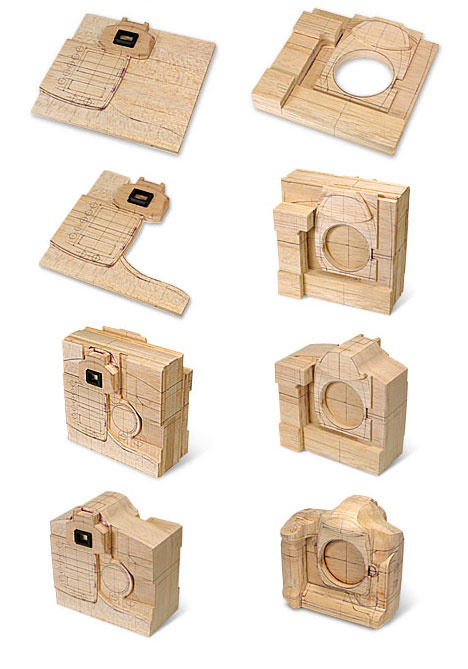
(Note–if you like this post and other cool DIY projects, make sure to add me on twitter and grab the DOIT feed)
In 2003, Canon posted a how-to on their website about making a Canon 1D mockup in balsa wood. The post sat on their site without much attention for five years, until October 2008, when it got “viral” and spread around the web on all the major sites.
About nine months later, for as-of-now unknown reasons, Canon’s writeup was removed from their site, including most of the associated image files. But thanks to the Wayback Machine, much of that original post is still salvageable. I’ve transposed as much of the information here to help keep it available.
You’ll have to fill in the blanks on the missing images for each of the steps (there were a lot of pics) but you can get a good idea from the ones that are still around.

Weekend Garage Sale Purchase: Bolts, Nuts, and Hydraulic Pipe Fittings
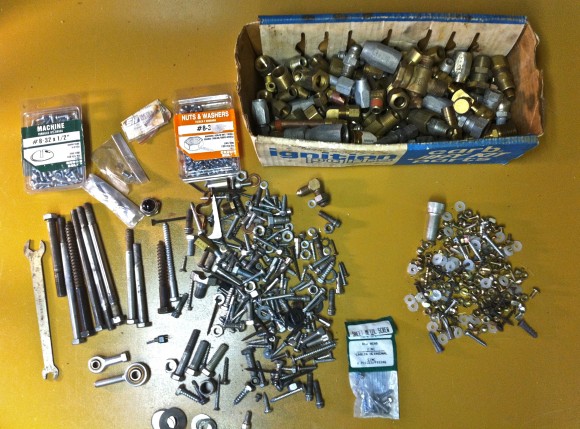
Saturday mornings, I love to peek at the local garage sale listings on Craigslist, usually to see what people are unloading in the way of tools. This weekend, I saw a “handyman special” nearby, and strolled over to it with an early morning coffee. As usual, the bigger goodies were all sold immediately, but I spotted a few bags of fasteners that seemed to have potential for yet-to-be-determined project work. Bolts, nuts, washers, a couple tie-rod ends, and a box of hydraulic pipe fittings. Not bad for a couple bucks — probably could find it cheaper (like, free), but if I’m going to make an impulse purchase, it’s nice to keep it in the five dollars or less category.
Anyone else find any treasures this weekend?
Wide-angle HD Micro-Camera Mounted to a Firework
Happy Fourth of July! Here’s a fun way to get a first-person view of a rocket’s trajectory and mid-air detonation.
The setup was put together by Jeremiah Warren (friend him on facebook). The camera is the 808 Car Keys Micro Camera #11. 720p HD capabilities in a keychain housing that weighs 15g, with a price around just $15 – sweet! The rocket itself is a professional-grade pyrotechnic firework, the type you need a license for (although I’ve seen some pretty burly fireworks for sale in certain states).
If you decide to try this yourself, PLEASE do it safely and responsibly. There have been some big wildfires this year, so let’s not cause any new ones with carelessness. Not to mention handling explosives.

Happy Father’s Day, Dad!

Dear Dad,
Every Father’s Day, I tell you you’re the greatest dad in the world, but that’s never slowed you down from continuing to educate and inspire me. From teaching me how to use a soldering iron when I was five years old, to getting your PhD as a retirement present to yourself, I could not ask for anyone better as my role model.
Happy Father’s Day. You’re the greatest dad in the world.
-Mike
Secret Surveillance Garden Birdhouse – Notes and Plans from my Build
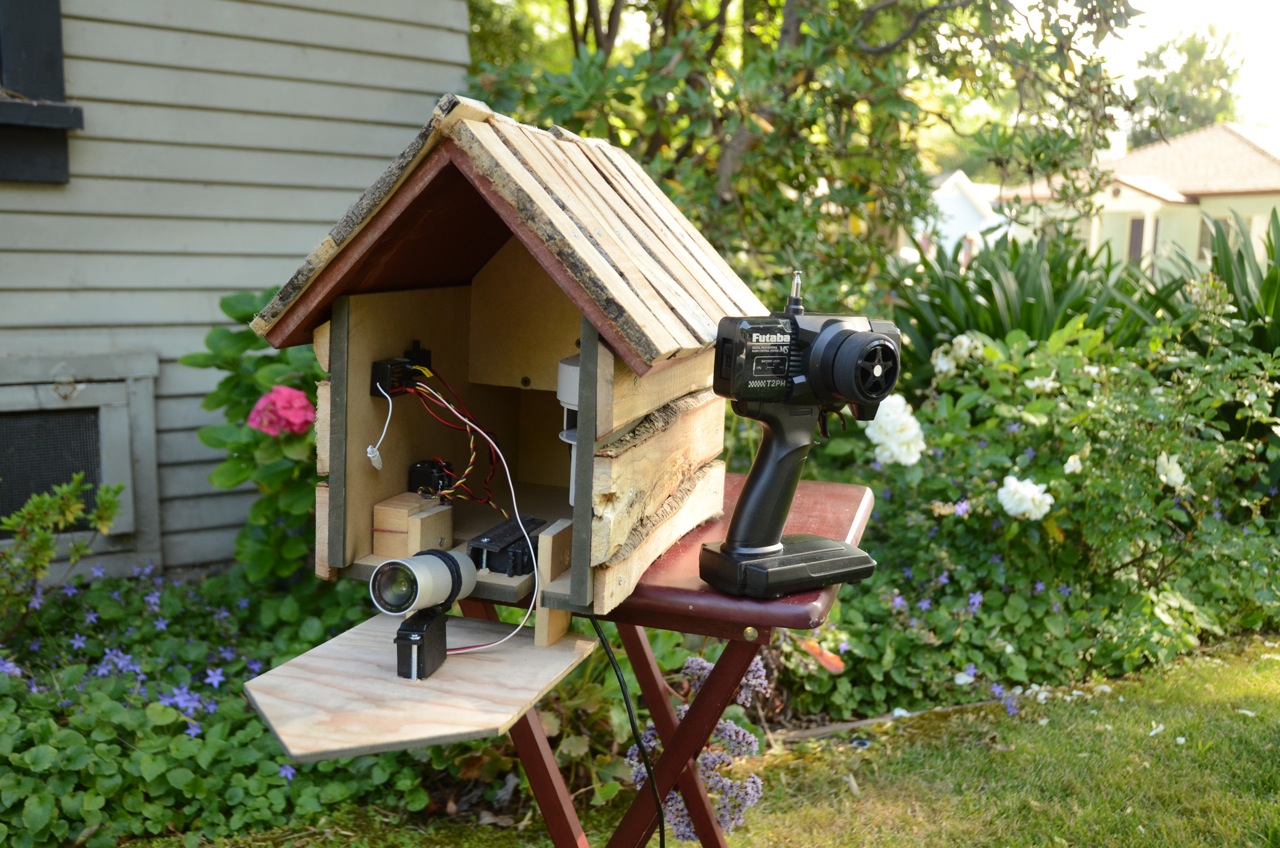
This Friday I’m doing a workshop for Craftsman in Chicago, for their first annual blogger summit. The different presenters each introduced themselves by building a birdhouse project that represents them.
I started the project by drawing a set of blueprints, knowing that I wanted something with multiple compartments and a remote-access rear hatch. I adjusted things on paper a few times, and then built a small model of the birdhouse to make sure the pieces would work together, and the hinge apparatus would function correctly. Glad I did this first because there were a couple key modifications from it.
Once the model was built, the actual birdhouse came together fairly easily, with just a few small changes. I really like the way the tiny bird apartment conceals the high-tech inner workings.
I painted the exterior green and stained the roof red. I’ve been wanting to use the dead, dried tree from my yard for a project (or as fuel in my pizza oven) so did some resawing, cutting it into rough 1/2″ planks. The addition added a fantastic rustic charm that would make this birdhouse look great in any garden.
On the inside, I used an RC servo to control the rear door, with a second servo that pans the webcam side-to-side. A high-gain wifi antenna allows the setup to be placed a distance away from the house but still have access to internet signals, in case you want to stream the video feed, or just check up on facebook while gardening.
There are a number of tweaks I’d still like to do, including transitioning the entire thing to Arduino, but for now, I’m very happy with how the birdhouse came out.
Check it and the others out on Craftsman’s Facebook page.
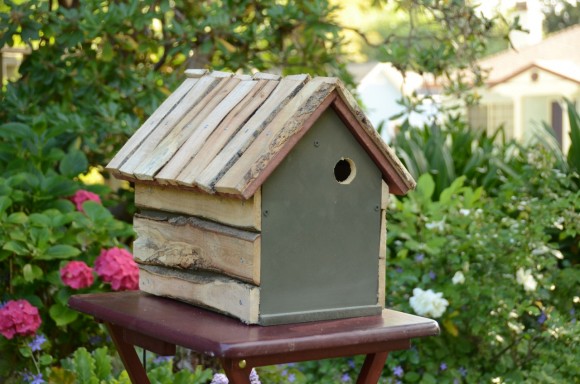

Cheap Ruler Review: You Get What You Pay For
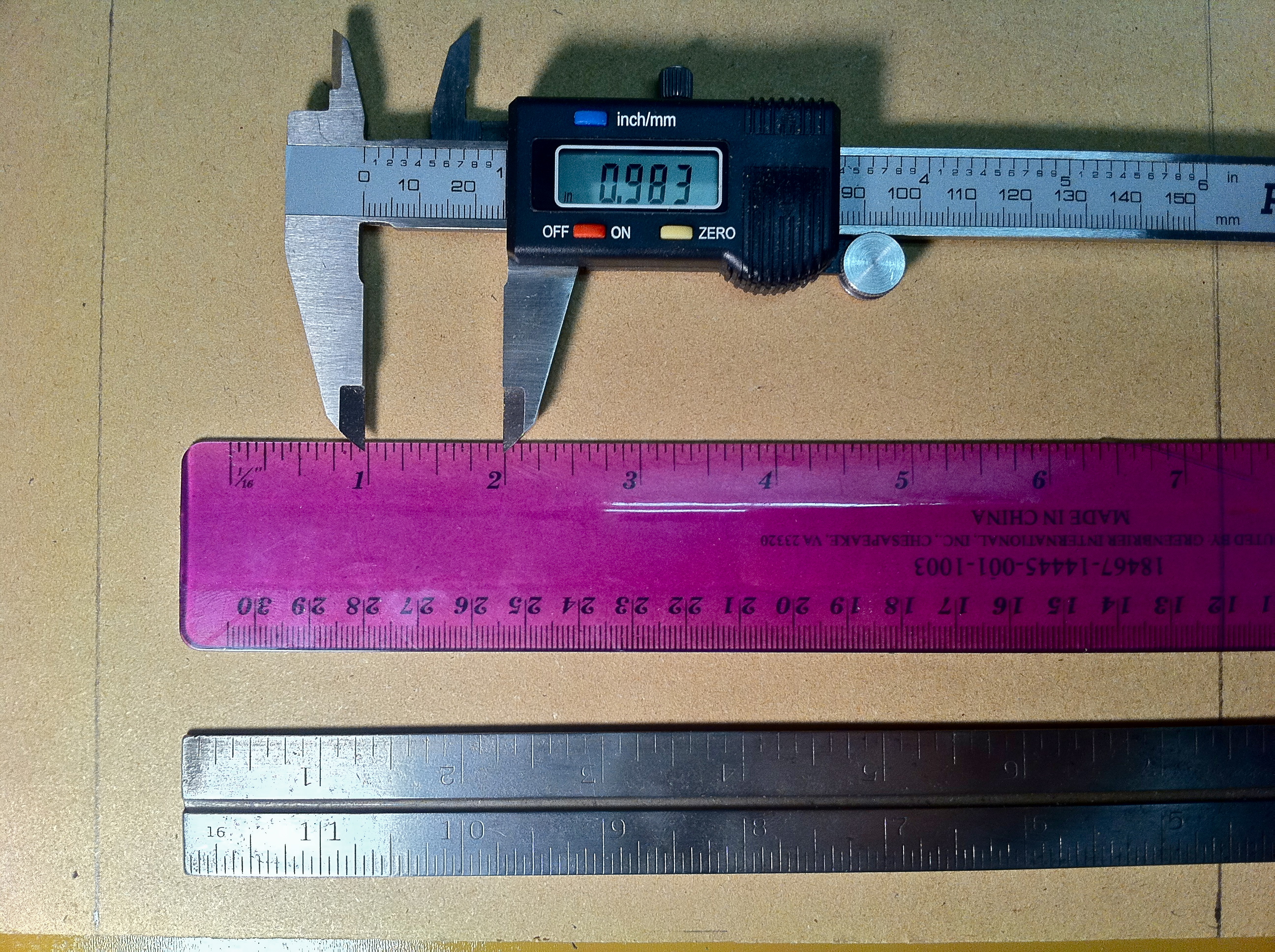
Right between drill presses (#1) and shop-vacs (#3), measuring devices are some of my favorite tools.
A few months ago I was rummaging through the stationary and school supplies section at the 99 Cent store and saw the perfect companion to my office cutting mat: a two-pack of translucent plastic rulers. It’s a real benefit to be able to see the object you’re measuring through the device that you are using to measure it with, and just 99 cents? Sold.
I’ve been using them pretty regularly for various small projects, including last night, as I brought some supplies into my garage to make some revisions and alterations on a build I’m doing. Suddenly, nothing would line up. Double checked, triple checked, determined the straightness of the material, checked that the edges at 90º angles.
It finally dawned on me to check the plastic ruler. Sure enough, it came up short. Checking it against my steel ruler and digital caliper, it turns out that each inch on it actually measures as 0.983″ — over 12″, that’s a 1/5 inch difference.
How many school kids out there have inadvertently struggled on projects due to such a shoddy product?
Also, sorry to anyone who’s gotten something from me 1.7% smaller than requested.
Pros: Dirt cheap. Translucent. Graduated markings appear to be consistently placed. Makes things seem bigger than they really are, if you know what I mean.
Cons: Inches and centimeters? Not even close. Flimsy plastic feels a few grades firmer than a fruit rollup. Exacto blades slice through it like paper.
